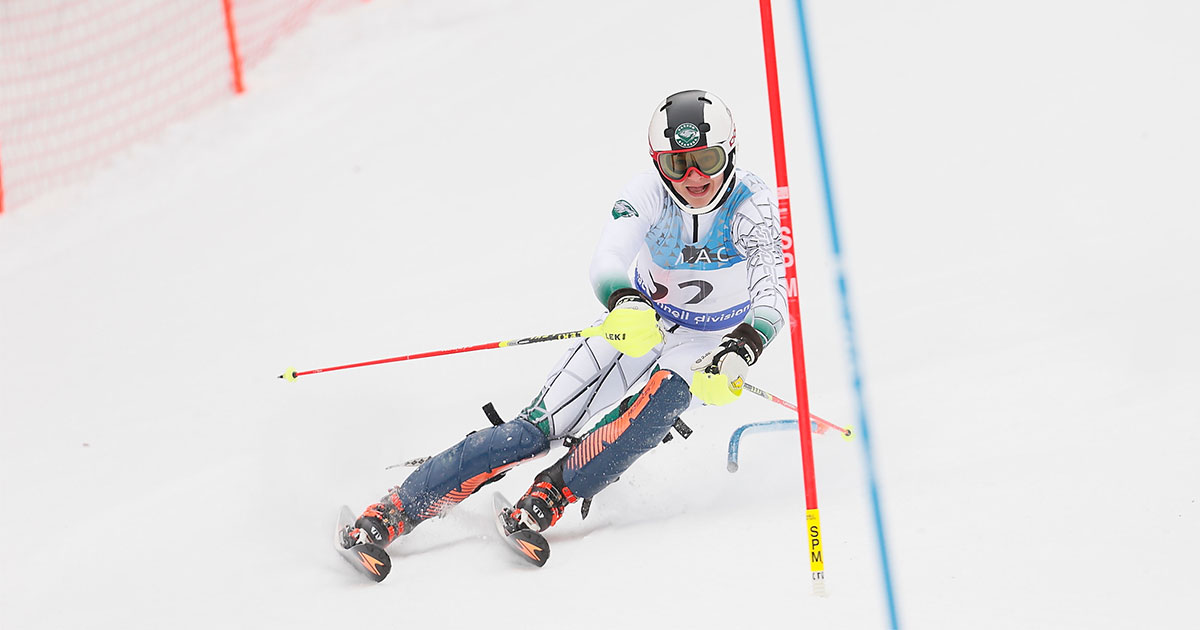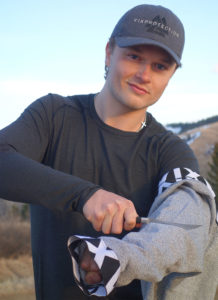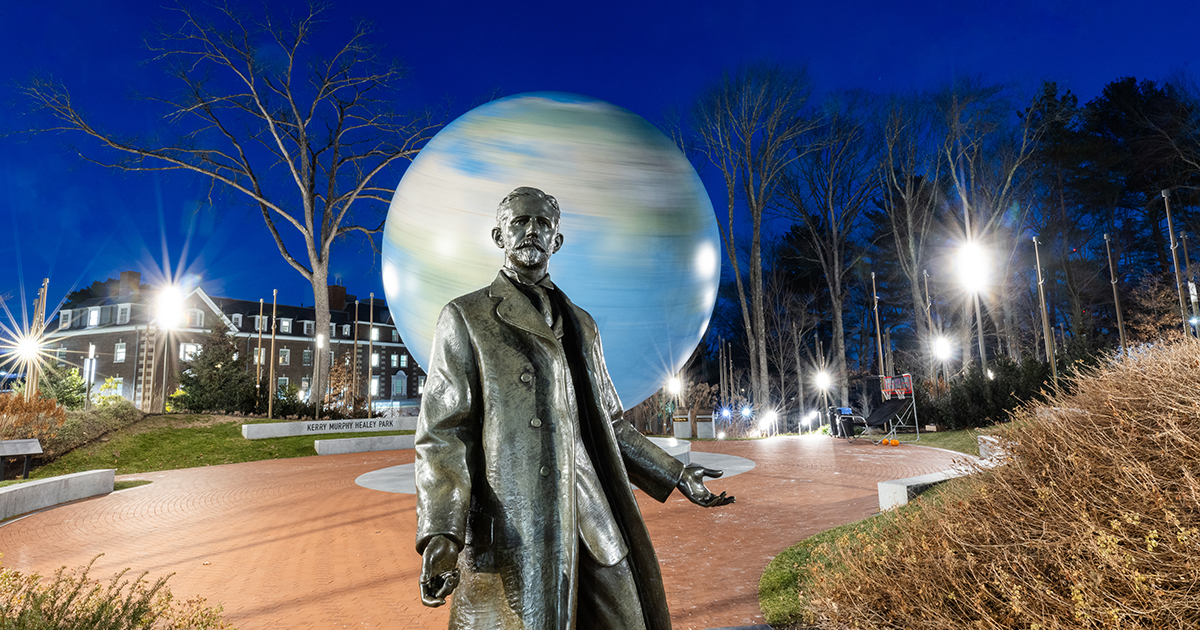A Frightening Crash Leads to Life-Saving Opportunity

Victor Wiacek ’22 is a competitive skier, and, as a competitive skier, he accepts that falls are inevitable. He has had more than his share, and he can rattle off the injuries he has suffered: two torn ACLs, two herniated discs, a torn meniscus, and so on.
“I’ve had a thousand crashes,” says Wiacek, who races with the men’s alpine ski team at Babson College. “I’ve gotten hurt a lot. I’m the kind of person who likes living on the edge a bit.”
At first, the accident he suffered February 3, 2019, while racing at New York state’s West Mountain, seemed more of a fluke than anything serious. One of his skis had simply popped off while competing in the giant slalom.
But, then his body’s forward momentum carried him across his ski, and its edge, kept sharp so the ski could easily slice through the ice and snow while racing, cut Wiacek’s thigh to the bone. Thankfully, tourniquets were applied quickly by those nearby, but he lost a tremendous amount of blood. “I heard the EMTs saying, ‘He’s not going to make it,’ ” Wiacek recalls. “That was a scary moment.” On the way to the hospital, he was given a blood transfusion.
Though the accident left Wiacek in a wheelchair for two months, he would go on to fully recover from the injury. And, in the accident’s aftermath, he immediately began thinking like an entrepreneur, pondering how he could protect himself and other skiers from similar mishaps. Lacerations are common in the sport, Wiacek says, but not much attention is paid to how they can be guarded against.
Now, just over two years after that frightening accident, Wiacek is running a successful business that he founded, Vix Protection, that sells cut-resistant leggings for skiers. “I decided this is something the ski world needs,” he says.
An Inventor
To make those leggings required a lot of research. Wiacek acquired roughly 200 fabric samples from manufacturers around the world. He looked for fabric that was comfortable and warm, as well as resistant to cuts, a property that was difficult to assess.

Victor Wiacek ’22 demonstrates the durability of Vix’s cut-resistant leggings.
That’s because the existing testing standards for cut resistance are lacking. They might measure industrial uses, say if you need pants to wear while doing glasswork or sheet metal work, but they aren’t specific to the hazards of skiing.
With no better options, Wiacek decided to make his own testing device. Working in the Brooklyn, N.Y., warehouse of his dad’s roofing company, he invented a device that runs fabric along the edge of a ski.
Using his invention, which proved so effective that Wiacek applied for a patent, he was able to identify the best fabric to use for his leggings. Fast forward to March 2020, and the first order of those leggings arrived from the manufacturer.
A Powerful Moment
Since then, business has taken off for Vix, which has contracts in 39 countries with dozens of ski resorts and hundreds of ski teams. A growing number of the top ski racers in the world now use its products, and business is so good that Vix had to set up an office in Austria to handle its European operations.
Most importantly, the leggings are showing results. “We have already prevented at least 12 ski laceration injuries,” Wiacek says.
Because of the company’s growth, Wiacek has taken the year off from Babson and the ski team (the team is training but not competing this season due to COVID-19), though he is eager to return to both in the fall. Despite all the success with Vix, he knows Babson’s professors still have many useful lessons to teach him about business. “I have developed an understanding of just how much I have left to learn,” he says.
“I decided this is something the ski world needs.”
Victor Wiacek ’22
What he understands instinctively, however, is the mindset of the skier. Wiacek knows that his leggings are filling a drastic need, because racers like himself are too competitive to stop using sharpened skis, no matter the risks. Even after all that happened to him, Wiacek admits that he was soon thinking about returning to the slopes.
“Skiing is such a nonsensical thing,” he says. “It’s hazardous and dangerous. Skiers are accepting risks by putting two planks on their feet and going down a slope.”
Wiacek first returned to the slopes about 10 months after his accident, skiing for the first time on Christmas morning. He was with his family on New York state’s Windham Mountain, where he had grown up with the sport. “It was emotional,” he says. “It was powerful. I just realized I can’t imagine life without it.”
Posted in Entrepreneurial Leadership





